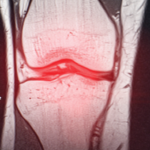 BALTIMORE—One of the greatest advancements in medicine in the past generation has been the ability to examine disease pathogenesis, response to treatment and other issues at the most minuscule level, including that of single cells. At the 17th Annual Advances in the Diagnosis and Treatment of the Rheumatic Diseases meeting at Johns Hopkins University School of Medicine, Baltimore, Clifton O. “Bing” Bingham III, MD, professor of medicine and director of the Arthritis Center at Johns Hopkins School of Medicine, provided a masterful overview of rheumatoid arthritis (RA) with this perspective in mind.
BALTIMORE—One of the greatest advancements in medicine in the past generation has been the ability to examine disease pathogenesis, response to treatment and other issues at the most minuscule level, including that of single cells. At the 17th Annual Advances in the Diagnosis and Treatment of the Rheumatic Diseases meeting at Johns Hopkins University School of Medicine, Baltimore, Clifton O. “Bing” Bingham III, MD, professor of medicine and director of the Arthritis Center at Johns Hopkins School of Medicine, provided a masterful overview of rheumatoid arthritis (RA) with this perspective in mind.
Synovial Tissue Biopsy
An expanded understanding of the pathogenesis of RA is one of the most exciting, cutting-edge areas within rheumatology, Dr. Bingham stated. The Accelerating Medicines Partnership (AMP), a collaborative effort of the National Institutes of Health, the U.S. Food & Drug Administration, and multiple biopharmaceutical and life science companies and non-profit organizations, has the goal of transforming the current model for developing new diagnostics and treatments. One AMP initiative is looking at synovial tissue biopsy in patients with RA to better understand what is happening in these patients at the tissue level.
As a first step in these projects, synovial tissue acquired from patients subsequently undergoes disaggregation. While a sample of the tissue is examined using standard histology, other cells are separated and analyzed, some using flow cytometry and others using mass cytometry. After these cells are sorted into individual populations, they are then subjected to certain forms of analysis that allow the evaluation of RNA sequencing, which can be done both on bulk samples as well as on single-cell sorted samples.
The tissues are then grouped as patients with leukocyte-rich rheumatoid arthritis and a great deal of infiltrating cells present in tissue, and those with leukocyte-poor RA. As a means of comparison, synovial tissue samples from patients with osteoarthritis are also evaluated. These different data sets are then mined using advanced analytical methods to begin to look at what is happening at the single cell level.
Even at this early stage of discovery, interesting insights are being revealed about RA. For example, sublining fibroblasts are highly expressed in RA synovium, whereas lining fibroblasts are more common in osteoarthritis synovium.1 These sublining fibroblasts in RA patients are particularly expressive of interleukin (IL) 6. In contrast, pro-inflammatory myocytes in the synovium of patients with RA produce primarily IL-1.
Populations of autoimmune B cells have been identified in synovial tissue, and T cells (specifically peripheral helper and follicular helper T cells) have also been identified. Among T cells, distinct subsets of CD8+ T cells have been discovered, many of which were not previously known.1 Dr. Bingham noted that all of these data are giving more information about what is happening in the synovial microenvironment in terms of the numbers and types of cells, what they are expressing and where they are located.

